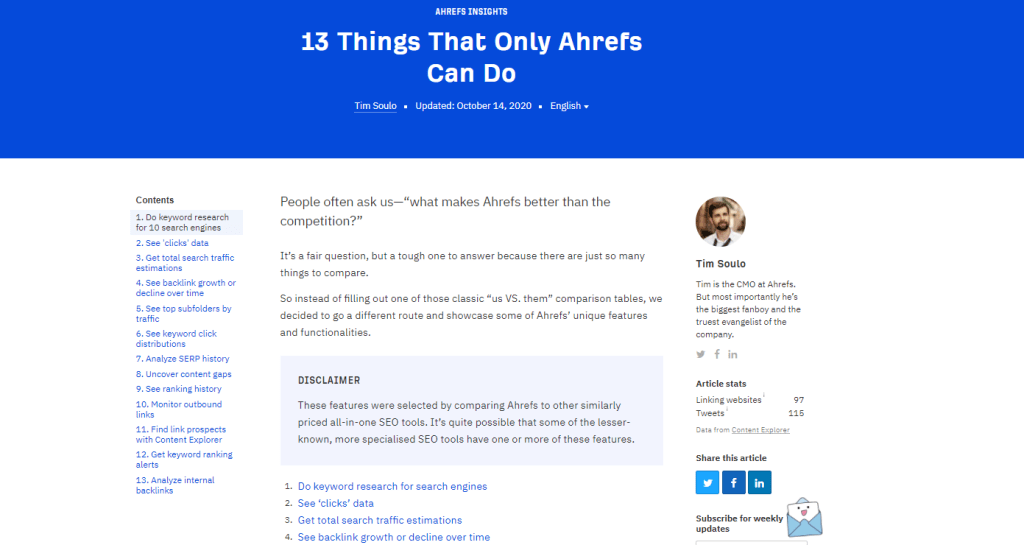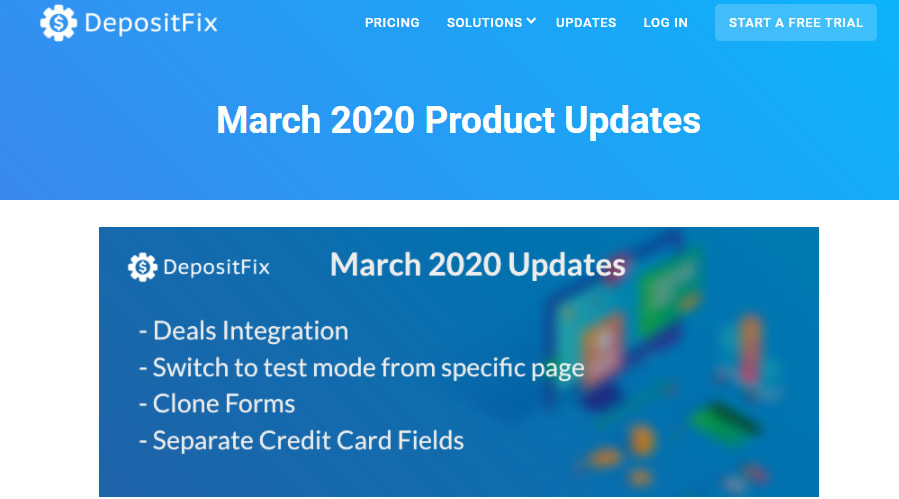Feature Marketing: Waste Of Time Or Awesome Tool?

Feature Marketing: Waste Of Time Or Awesome Tool?
Feature marketing is a relatively new term, but SaaS companies have already taken a great interest in it. Back in the day, you would launch your software, run a marketing campaign at the start, grab the attention of an audience and that was it. You then tried to retain your audience for as long as you can.
But churn is inevitable, so with time, software companies have figured out a way to improve customer retention that is also very good at attracting new ones.
As you might have guessed, I’m talking about feature marketing. It is somewhat of a vague term right now and can mean any number of things, from an email campaign to hosting webinars and giving out free trials.
So, before we dive into whether feature marketing is worth your time, we have to answer this question:
What Is Feature Marketing?
Feature marketing is a strategy where a company focuses its marketing efforts on a new feature that has recently been added to an existing product.
These new features usually serve one of these purposes:
- Expand on already established functionality in order to improve the quality of life of your current users;
- Add completely new functions to cater to new audiences’ pain points and expand the tool’s overall horizons;
- A combination of both.
It is a very powerful tool for reducing churn while attracting new users. But, just like with everything, there is a trick to it.
The challenge in running a successful feature marketing campaign is to match your strategies with what kind of new features you’ve added. This leads us to our next question.
Is It Worth Investing In A New Marketing Campaign For New Feature Releases?
This entirely depends on what kind of features we are talking about. If it’s merely a UI update that doesn’t bring anything groundbreaking to the table, running a feature marketing campaign for it is a definite waste.
So, when is it worth investing in? To determine that, you first have to ask yourself the following questions:
- Does it improve or expand on already existing functionality?
- Does it cater to your users’ pain points and improve their quality of life?
- Is it a feature none of your competitors have or does it differ from what they have to offer?
- Does it help solve new problems?
- Have you tested it thoroughly?
If your answer to one or more of these questions is “yes”, then it is well worth running a separate feature marketing campaign.
Let’s take a look at some common feature marketing strategies as well as situations when they would be appropriate to use.
Feature Marketing Strategies
There are quite a few approaches to feature marketing, so let’s take a look at some of the strategies you can employ, starting with some of the easiest.
Email Campaigns
While almost exclusively suited for informing existing users about your updates, emails are a very effective way of getting your information to your recipients.
It is also the easiest PR/marketing strategy to implement, and it’s free!
It can also be used to reach potential new customers, but in reality, it’s much more effective with your established users.
If you offer different subscription tiers, and your update is only for the higher-tier users, interesting lower-tier guys or free trial users with a free run of your new features would be an awesome idea.
This way, not only will you be letting them know about your new functionality, but also giving them a chance to try it out for themselves, encouraging upselling.
In-App Notifications

Setting up an automatic in-app message whenever you release a new update to let all your users know about it is probably even easier than launching an email campaign.
It is also much more engaging since it only targets users that are using your software at the moment of receival. Because of this, they are much more likely to actually be interested in what you have to say, especially if your new feature is aimed to help them reach their goals more easily.
Free Trials
Unlike the previous two strategies, which are mostly centered around existing users, free trials are great for attracting new ones, and upselling your freemium or lower-tier customers.
Free trials work flawlessly in combination with all of the other strategies, so you can add a free trial invitation link to your emails, in-app messages, social media and blog posts, etc.
This way, people that are not sure your software is what they are looking for can try it out first-hand, and your lower-tier users can see what they’re missing out on as well.
It’s a win-win for all parties involved, so there’s literally no reason for you not to take advantage of it.
Blog Posts
New features also grant you new topics to write about in your blog. Tutorials, use cases, and showcases of your new features are a great way to educate your users about your new functionality and show it off to potential customers who decided to give your blog a visit.
In addition to that, blog posts are also great for SEO since they help attract more traffic to your resource.
Landing Pages
Speaking of SEO, building landing pages for your new features is a great way to display your new features separately from the rest of your functionality. For example, our own tool, Respona isn’t strictly developed for link building, but our link building landing page shows exactly how it can be used for this purpose.
Landing pages are perfect for showing exactly how your features differ from those of your competitors, their use cases, and who they will be useful to in the same spot.
Paid Social Campaign
A paid social campaign will help you reach the widest audience out of all listed strategies, since most people go on Facebook or Instagram at least once a day.
It is the perfect opportunity to both get information on your new features in front of your group members, and advertise them to new audiences, all on the same platform.
In addition, you can advertise your blog posts on social media to drive even more traffic to your site.
Educational Courses/Webinars
This strategy will be especially useful if utilizing your new features requires some kind of technical knowledge.
Not only are online courses a great opportunity to educate your users, but also a great move for establishing a much more personal connection with them.
Webinars are also great for putting your product in front of a new audience. For example, a webinar titled “How To Design A Monthly Report Your Boss Will Love” would be the perfect opportunity to advertise your data visualization tool.
Joining efforts with some other SaaS companies
is a good idea since it will expand your reach to a much bigger audience. Also making use of promotional materials like tutoring flyers & posters will help you get more reach among your audiences.
Customer Calls
This is the most personalized, hands-on strategy for informing your users about your new features, educating them on how to use them, and generally connecting with them on a much more personal level.
Onboarding calls are also an awesome way to get new customers up to speed with everything your software is capable of while showing genuine care about their needs and making them feel special.
And if a customer feels special when using your product, they are much less likely to switch to your competitors’ software.
Pick The Strategies In Accordance To Your New Features
If your new features are rather minor and don’t require any additional learning to use, some emails and in-app messages would probably suffice.
If you were trying to get that sweet new slice of the market by adding completely new functions, it is very much worth investing in a paid social campaign, preparing some educational courses, and hosting webinars.
Every feature marketing campaign is unique since no SaaS company is the same, but they all share the same trick at their cores: finding the perfect balance between the amount of resources spent on it and who you’re trying to reach (either existing users or new audiences).
Examples Of Strong Feature Marketing Campaigns
Let’s take a look at some of these strategies in action.
Ahrefs
Ahrefs has the perfect example of a feature blog post. In this piece, they go in-depth on exactly which functions their tool has that you won’t find anywhere else.

Not only do they list them, but each feature has its own subtitle where Tim describes what each feature is useful for as well as a brief explanation of how to use them.
Ahrefs also make full use of their Facebook page, and promote every single blog post of theirs there as well.

Ahrefs is an amazing example of good feature marketing as they employ practically every strategy out there, and even some that I haven’t mentioned.
They also run a YouTube channel where they frequently upload guides not only on how to use their tool, but also on overcoming common challenges every SEO has to face. They work as very accessible training courses on the most popular video hosting platform, which is even better than uploading them to a separate resource.
Respona

We, at Respona, take a pretty personal approach to every customer, and whenever they register in our system, they receive a series of onboarding emails to get them acquainted with all our functions, as well as update emails whenever new ones are released.
Our co-founder, Farzad Rashidi, actually handles customer calls himself, and often books meetings with customers to introduce them to each feature.
DepositFix
DepositFix is a HubSpot payment integration that allows users to accept donations, payments via HubSpot forms.
Whenever new features become available, they combine them and publish as a blog post. The blog posts are accompanied with screenshots and sometimes videos that make the point much clearer.

Conclusion
So, is feature marketing a waste of time? Absolutely not. It is an invaluable way of giving your users a reason to stay, showing care about their needs as well as interesting potential customers in what you have to offer.
So, when you decide to add a new feature to your software, definitely give it an extra round of promotion. The benefits greatly outweigh the negatives, and feature marketing is an awesome way of combating churn.

INBOUND MARKETING
BEST PRACTICES
TO INCREASE
SAAS COMPANY’S SALES
Tags:
SaaS GrowthDecember 28, 2020


Comments